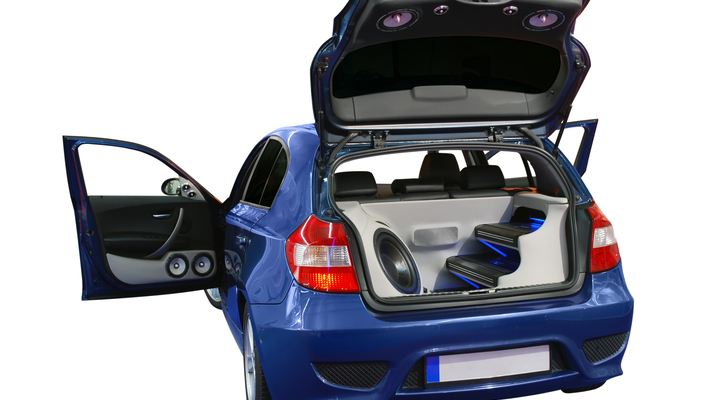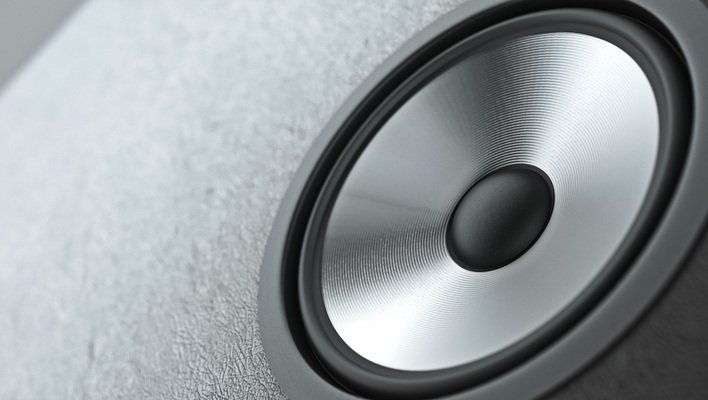Tweeters create high-frequency sounds that cannot be produced well by other speakers. Can’t choose between dome tweeter vs horn tweeter? Here’s the best design.
Music is a mixture of high frequencies (treble), midrange frequencies, and low frequencies. However, not all speakers can play all the frequencies at once and make the audio quality sound crispy clear. So most people buy separate sound equipment to separate the signal and channel high frequencies to tweeters and low frequencies to much larger speakers and subwoofers. Currently, there are two main types of tweeters; dome and horn. If you’re stuck between buying a dome tweeter vs horn tweeter, read on for more details.
What is a Tweeter
If you’re new to car audio and sound equipment in general, tweeter meaning might not be clear at first. Tweeters are small loudspeakers designed to produce high-range frequencies. Most sound systems are divided into several parts but you need the right equipment for the right frequency if you want to get clear, detailed sounds. You can find tweeters in car and home stereo systems.

Stereo systems break down audio signals into different frequencies, mainly high, midrange, and low frequencies. Each frequency is sent to its rightful driver by the system’s components. You’ll find all the equipment (subs, woofers, and other types of speakers) housed under one roof in most cases. And since each driver handles the frequency it’s designed for, the overall sound quality produced by all the equipment at once gives a memorable experience.
The working mechanism behind tweeters is almost identical to that of a traditional speaker. They use drivers to move a flexible cone (made of several materials) in response to an audio signal. However, one of the biggest differences between tweeters and other drivers is the size. While woofers and subwoofers come with large speakers designed to handle the bass, tweeters come in much smaller speakers that make the highest pitched sounds.
Speakers designed to play higher frequencies should be capable of making quick back and forth movements. However, moving large drivers takes more time, so larger speakers are not suited to high frequencies. Instead, tweeters are used to create better quality treble since they’re made of much smaller drivers that aren’t as hard to move as larger speakers.
Most Popular Types of Tweeters; Dome Tweeter Vs Horn Tweeter
Tweeters can be classified into different categories based on their sizes, e.g., 1 inch dome tweeters, 2-inch tweeters, 3-inch tweeters, etc.). They can also be classified according to the main material, electrical components, functions, areas of application, and much more. Some of the most common types include cone tweeters, ribbon, AMT tweeters, planar-magnetic, electrostatic, piezo tweeters, etc.
Before making your final decision on horn vs dome tweeter, it is important to mention that tweeters require a high-pass crossover for optimal performance. Remember, they’re not designed to handle bass (low frequency) and can easily sound distorted when forced to play lower frequency. They may also get damaged if a low frequency drives them.
Instead, you want to connect the tweeter and crossover to the amp’s output in a parallel alignment with other speakers in the system. The crossover blocks out any low-frequency signal from getting to the tweeter and degrading your music quality.

More About Dome Tweeters
Dome tweeters go a long way back to the early days of audio engineering. They’re some of the most common tweeters used in car audio and home stereos. Dome tweeters are manufactured from various materials such as titanium, silk, aluminum, plastic, and more. The design features an actual dome with a metallic wire (aluminum) wound around its rim. Dome tweeters portray different performance capacities based on the main material.
For instance, are silk dome tweeters good? Yes, they play smooth sound but not as hard as metallic tweeters. This brings us to other types of dome tweeters; metal dome tweeters and soft dome tweeters.
Soft dome tweeters work just like other types of tweeters. They feature a voice coil that freely moves in an electromagnetic field when an electrical signal passes through it. Soft dome tweeters derive their name from the soft nature of the materials used to manufacture them (fabric or silk). Different materials have different impacts on the nature of the sound output. Soft dome tweeters are said to be better dampened than metal tweeters hence produce a smoother frequency response. They’re less stiff and often preferred for their wide dispersion and sound accuracy.
On the other hand, metal dome tweeters are tweeters made of metal alloys such as aluminum, titanium, or beryllium. They have more dramatic breakup modes than soft tweeters, as manifested in the sharp peaks and sharp dips, producing more detailed sounds. However, even the best metal dome tweeters yield varying results depending on the user. Some may sound harshly irritating at high volumes, while others may sound clear.
Dome Tweeter Advantages
Since the invention of the moving coil speakers, dome tweeters have found practical applications in our cars and homes today. Here are some of the advantages;
- Cost – Some good dome tweeters are somewhat cheaper, but again this depends on the brand. Cost varies from $5 to over $200 depending on the brand’s reputation and the seller.
- Average sensitivity to high frequencies.
- High-quality treble.
- Great dispersion.
- Low chances of distortion.
Cons
- Require more power
- Metal dome tweeters are much stiffer than fabric tweeters, which may lead to ringing.
More About Horn Tweeters
Horn tweeters are the less popular tweeter models used in cars today. To some extent, they resemble the horn loudspeakers used by activists in demonstrations; only that car horn tweeters come in a much smaller size. Nevertheless, horn speakers have been around for some time – probably longer than the dome speakers.
What makes horn tweeters a viable choice today is their efficiency. According to our audio experts at Audio Curious, horn tweeters may produce a higher output than dome speakers. They can also create better sound dispersion by controlling the off-axis speaker frequency response variations. And while there is some variation in quality depending on whether or not you’re listening from an angle, most horn tweeters offer good enough performance in all directions.
Are horn tweeters better? In some cases, horn tweeters are said to be better than typical dome speakers because they are less sensitive to power levels. When you have high sensitivity and no filters that separate narrow bands of frequencies, there might be some issues with sound quality unless the space dimensions are perfect. Otherwise, listeners must remain in one zone relative to where loudspeakers/sound sources exist for the best experience.
Horn Tweeter Pros
Horn tweeters are designed for broad applications in homes, parties, celebrations, and car audio. Some can withstand heavy all-year-round use, while others are durable for all environments. Their range fits right in between the perfect balance of volume without distortion to make your experience complete. Here are the reasons why you should consider investing in horn tweeters.
- Horn tweeters can be installed to provide a clean, crisp sound with little distortion in your vehicle’s stereo system.
- They’re lightweight, making it easy to install in seconds without drilling and cutting large metal or trunk panels.
- Better efficiency
Cons
- Horn tweeters are often more directional than dome tweeters.
- They are a little bit more expensive than dome speakers.
- Fatiguing resonance peaks.
Verdict
Are you stuck on what type of tweeter is best? There’s a lot more to dome tweeter vs horn tweeter, but if you really want to enjoy the drum effects, cymbals, hi-hats, and other high-pitched instruments, high-quality tweeters are a must-have in your stereo. If you’re looking for something that’s up-to-date, offers better balance in frequency, readily available in various options, and best of all, affordable, dome tweeters are the right pick. But if you’re more into something that offers better dispersion at a higher efficiency, horn tweeters are the right pick.

